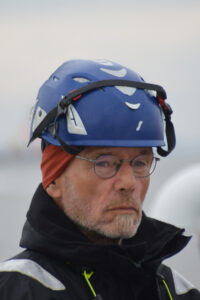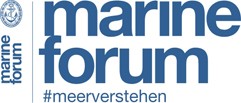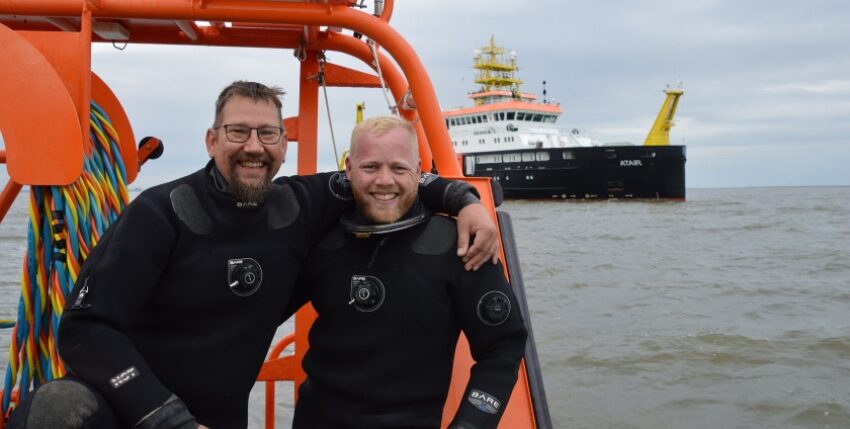Martin Sulanke has been a professional diver for 36 years. He works on the "Atair". In an interview on board, he explains what his job involves and why it can be dangerous underwater.
"I originally come from deep-sea fishing," says Sulanke, who wears a white stubbly beard, a silver earring and a red cap. The 61-year-old, who now lives in Bad Schwartau near Lübeck, comes from the former GDR. He later joined a hydraulic engineering company and trained as a professional diver.
After the end of the GDR, he joined the Federal Maritime and Hydrographic Agency (BSH). He has served the authority, which is responsible for nautical charts and offshore wind farms, for 34 years. In the meantime he works on the survey, wreck search and research vessel "Atair".

Most of the conversation takes place after work in the diving room. The wetsuits of Sulanke and his colleagues Jan Lütjen and Tjark Lange are hanging there. In the background is a pressurised chamber. This is where divers can acclimatise to the pressure at depth and be treated after diving accidents. If a diver surfaces too quickly, for example, the drop in pressure can trigger dangerous processes in the body - in the small chamber he can then be exposed to higher pressure again.
There is also a diving helmet. It is made of fibreglass-reinforced plastic and is weighted to counteract buoyancy. An intercom system is built into the helmet, "so that we are practically in contact with the surface," explains Sulanke. Two lights and a camera are attached to the helmet. This allows the crew in the accompanying boat to see the same thing as the diver on a monitor - if at all, as visibility was only a few centimetres during Lange's mission on the same day.
The breathing air is delivered from the boat to the diver, who also carries a reserve cylinder. This is normal compressed air, not a special gas mixture as some divers use. Sulanke believes that would be too complicated and therefore prone to errors.
For similar reasons, the professionals use tables before a dive to calculate how long they can work at what depth and how long they need for the ascent: "So we don't use dive computers."
Apart from breathing, divers also need air for their most important tool, the pneumolot. They use it to sound the depth. Air is sent down from the boat. The pressure required for the air to escape from the bottom of the hose makes the depth calculable.
When taking soundings on shipwrecks and other objects, Sulanke, Lange and Lütjen have to find the points that are closest to the surface. Particularly in the case of known underwater obstacles, it is also about changes in condition and position, especially due to tidal currents and thus changes in depth above the object.
In the case of new wrecks, the divers would also have to keep an eye out for leaking pollutants, oil and so on. In the end, the information collected below can be used to update nautical charts or plan salvage operations. The divers' work ultimately serves to indicate dangers.
The diving work itself is dangerous. Often there is hardly anything to see, currents are strong, equipment can ice up in the cold, diving from a boat is more difficult than from a ship: Sulanke mentions various risk factors. And the divers never know what awaits them below. As a rule, they go down alone, with a reserve diver at the top just in case.
Sulanke has not yet experienced an accident. However, he has seen colleagues who have experienced the feeling "that you can no longer control the situation" during a dive, perhaps due to a lack of visibility and a wreck above you. They had tunnel vision and "really only wanted to get out of the water". And then quit their job.
Phillipp Steiner










